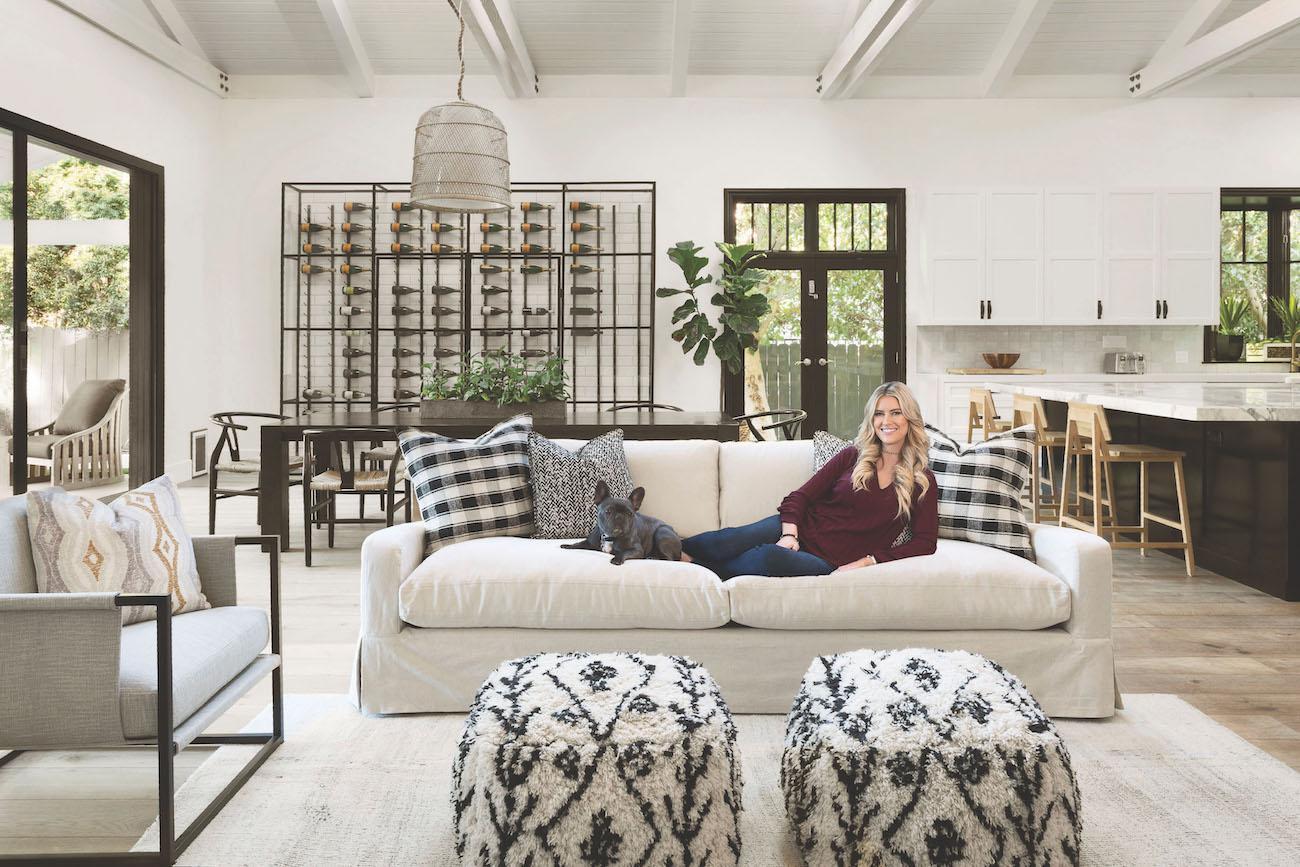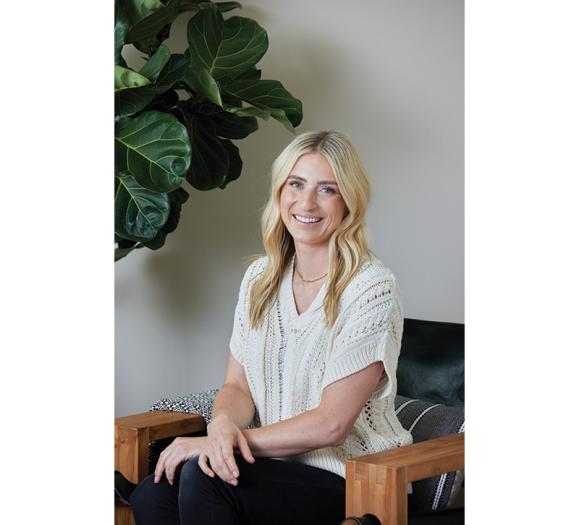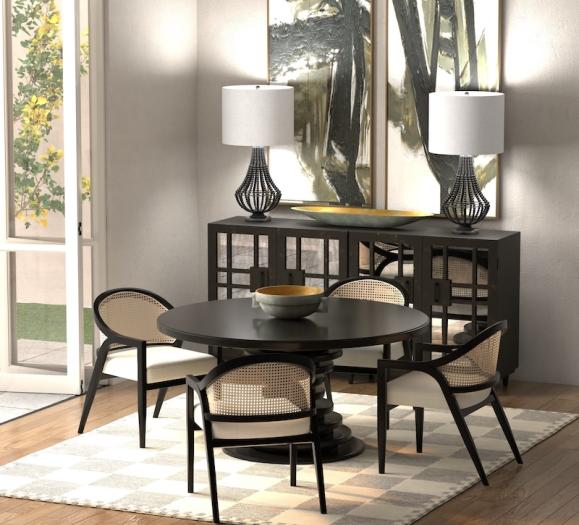Whether a designer is looking for a specific product they can’t find anywhere else, wants to share their aesthetic with a larger audience or just has a passion for product design, partnering with a manufacturer can help diversify their income while allowing them to express their creativity in a new way. The home furnishings marketplace is rife with designer collections, from first-timers to seasoned experts. We spoke with three designers with different backgrounds about their product licensing journeys and the benefits designers and retailers can reap from buying and specifying products from designer collections.
Christina Anstead
For design fans, Christina Anstead is a household name. Star of HGTV’s “Flip or Flop” and “Christina On the Coast,” Anstead is known for putting her design vision to work and making drab spaces pop. At High Point Market, Anstead launched her first-ever licensed product collection with Spectra Home.
The line is designed to fit today’s lifestyles; the upholstered pieces are covered in either performance fabrics or leather, adding durability, and the color palette is versatile — warm whites, light taupe, navy and patterns like graphite and heather that are easy to work with. The accent pieces complement these designs while remaining functional.
“Today’s homeowners want side tables that can be pulled into duty as auxiliary snacking spaces, cocktail tables that double as impromptu homework stations and console tales that are elegant enough to hold precious mementos but casual enough to store baskets of kids trinkets,” she says.
Anstead says she’s honest about the fact that she’s not a trained product designer and puts her trust in those who have more experience in the field to translate her design concepts into product. Her experience — both personally and professionally — gives her advantages in other aspects of the process.
“I have a talent for translating ideas and visions into designs with smart scale, proportion and livability,” Anstead says. “In my work I utilize furniture products every day so I get to see what works, what should have worked and what just doesn’t work. I’m also a mom with kids that literally live all over the furniture at home so I know what that tension feels like to want a beautiful home that is also super easy-living and easy-care for my family. Fortunately, we can now have both.”
Anstead says residential interior designers often find it helpful to have product lines vetted by someone else trained in the field, and by specifying a designer collection, they’re skipping right to that step.
“[Designers] see beyond the usual ‘Does it look good?’ and ‘Does it fit?’ criteria,” she says. “We have similar challenges when it comes to project scope, budget and reliable sourcing. We understand the balancing act needed to bring great products in that are of the proper quality and value, that bring more to the client than she expected, and that create a design that will be lived with and loved for years to come. We help solve their dilemmas, not create more.”
At the retail level, designer collections can help create a common language between the retailer and the customer. Customers who are already fans of the designer — particularly one as well-known as Anstead — have a starting point in describing their design preferences, which Anstead says can be difficult for most people.
“If they’ve seen my shows and like how I design and decorate spaces, then those visuals become a broader vocabulary for them,” she says. “And, when a consumer understands more, has seen more because they watch what we do on TV, they become more confident in their ability to engage with retailers. The crux of it is, when a retailer’s salespeople and consumers are speaking the same language, you can get to, ‘Yes, I’ll buy that,’ a lot faster.”
Beth Webb
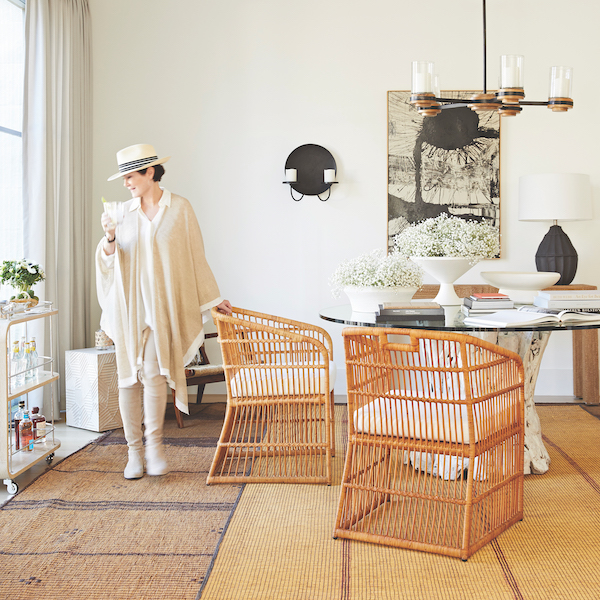
When Beth Webb, Founder and Creative Director of Beth Webb Interiors in Atlanta, was working on her first book, she had a revelation. She had a design message and a point of view that she felt needed to be shared beyond just her private clients. So she reached out to a brand development expert for guidance.
“The cycle of deciding to embark on this path to the day that the first products actually launch takes several years,” Webb says. “We spent a lot of time strategically deciding who to partner with, as I was looking for a long-term relationship and not a ‘one-hit wonder.’”
That partner turned out to be Arteriors. Webb trusted the brand’s reputation and was confident the company could effectively deliver her designs to a wider audience.
“We started with ideas of how we set our collection apart from existing collections — how do we offer something new and fresh and true to Beth Webb?” she says. “The use of materials was a very key component to this collection. Having custom-designed many pieces over the years, especially lighting for projects in Costa Rica, I was able to take that knowledge and incorporate it into these designs.”
Not only are the products in the collection “100 percent [her] own designs,” Webb also was involved every step of the way, from prototype to production, reviewing, refining and approving everything.
“That was one of my favorite parts of the entire process — seeing my designs come to life for the first time during the prototype reviews,” she says.
The collection of lighting, accessories and accent furniture launched at this fall’s High Point Market. Designers who already are familiar with Webb’s style will gravitate toward the pieces, she says. As a product designer, Webb sees herself as offering a unique point of view that other designers can use repeatedly, just as she does with certain products.
As a first-time product designer, Webb learned some lessons on her journey and offers advice to other designers interested in embarking on a licensing venture.
“Put your hat on straight and get ready for a wild ride!” she says. “All kidding aside, just be certain you can dedicate resources to have a successful collection and surround yourself with experts and the business and marketing side to make sure it’s the best possible partnership.”
Stacy Garcia
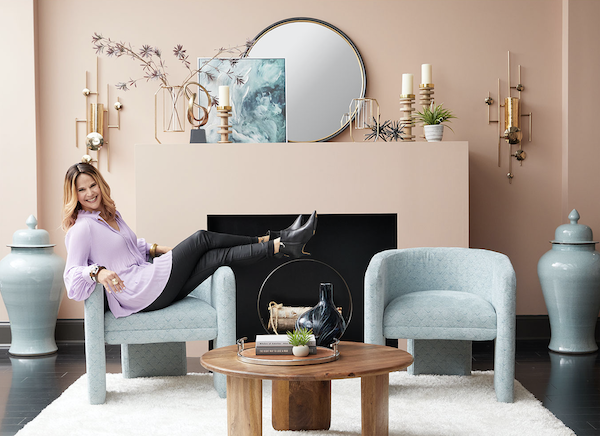
If you know Stacy Garcia, you know she does it all. She’s a trend expert, running the website and online magazine Life-Styled.net where she and her team interview design professionals and post about the hottest color palettes. She owns Stacy Garcia Inc., a design and licensing company. Garcia also has a background in surface pattern design, which she brought to a job at Ralph Lauren early in her career.
“Creating a brand under my name meant creating a platform, a way to add more beauty, design and meaning to the world,” she says.
Today, Garcia and her creative team collaborate with more than 20 licensed partners in commercial and residential markets, offering product categories that literally cover the whole home from floor to ceiling — furniture, accessories, lighting, carpet, wallcoverings and more. Her licensees include Klaussner Home Furnishings, IMAX Worldwide Home, Crypton Home, York Wallcoverings, Brintons Americas and TileBar.
Because of her background in design, Garcia says her team approaches licensing differently than others might.
“We are not only licensing our brand trademark, but our designs as well,” she says. “We are deeply involved in the process of design, from determining the direction, sketching product and designing patterns to selecting colors and finishes.” The team’s interaction with the production process depends on the manufacturing partner, but Garcia says they often have the opportunity to work alongside the mill technicians, colorists, engineers and machinists creating the products.
For Garcia, designer product lines are all about telling a story. When designers are familiar with a designer brand aesthetic, they develop a connection and have a story to pass along to their clients. The same goes for retailers.
“Retailers that offer designer product lines are also able to sell the designer story through to their customers,” she says. “They are able to benefit from the brand recognition and brand loyalty, potentially attracting new customers.”
Garcia isn’t slowing down any time soon. Her latest collection, an outdoor line with Klaussner Outdoor, launched at this fall’s High Point Market, and her team will soon be launching an e-commerce website, Shop Stacy Garcia. She’s also working on a residential rug collection and a lighting line for future collaborations.
“Your brand is your promise so make sure to partner with companies that can help you deliver on that brand promise and not compromise it,” she says. “Ensure that your goals are aligned with those of your partner’s.”



